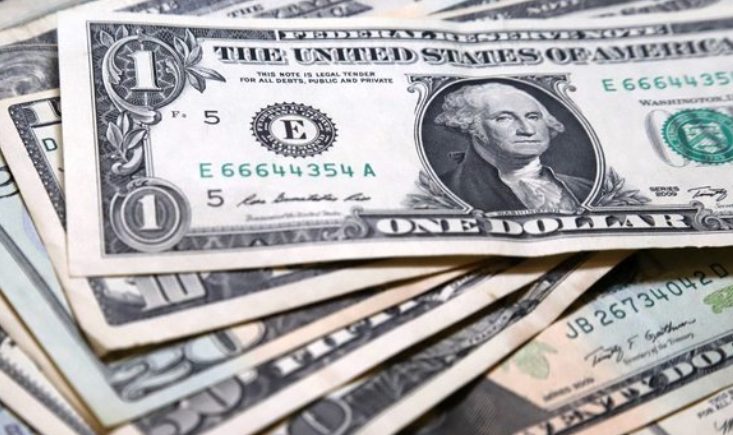Official Dollar and Blue Dollar: Exchange Rates of 2025, and Historical Analysis
By HomeBrasil |

The Argentine exchange market is known for its volatility and complexity, where multiple exchange rates coexist and directly impact the economy. On July 24, 2025, the values of the official dollar, blue dollar, MEP dollar, and CCL dollar reflect not only market forces but also government intervention and investors’ perception of economic stability.
Understanding these exchange rates is essential in a country dealing with inflation, monetary restrictions, and limited access to foreign currency. The difference between official and parallel rates affects not only everyday citizens but also businesses, imports, exports, and investment decisions.
In this article, you will find a clear overview of the current dollar exchange rates in Argentina, their historical evolution, and the factors shaping their fluctuations.
Dollar Exchange Rates in Argentina – July 24, 2025
On this date, Argentina shows several key reference points in its currency market. The following are the most relevant:
- Official Dollar: ARS 1,275 (sale)
- Blue Dollar: ARS 1,310 (sale) / ARS 1,290 (purchase)
- MEP Dollar: ARS 1,261.90 (buy) / ARS 1,264.70 (sell)
- CCL Dollar: ARS 1,259.30 (buy) / ARS 1,265.50 (sell)
Each of these rates plays a specific role, shaping both the formal and informal economy in Argentina.
Official Dollar: Controlled but Influential
The official dollar, regulated by the Central Bank of the Argentine Republic (BCRA), is set at ARS 1,275 for sale. Compared to the previous day, it shows a drop of ARS 25, reflecting monetary interventions.
This rate is the benchmark for imports, exports, and official banking transactions. However, strict controls often limit access to this exchange, encouraging citizens and businesses to turn to parallel markets.
Despite its controlled nature, the official dollar heavily influences inflation, the cost of goods, and international investor confidence.
Blue Dollar: The Parallel Market Reference
The blue dollar, Argentina’s informal exchange rate, is quoted at ARS 1,310 for sale and ARS 1,290 for purchase. Unlike the official rate, it is not regulated and reflects the true supply and demand for U.S. currency in the black market.
Although risky—given the absence of legal protection and exposure to fraud—the blue dollar remains a key reference for many Argentinians who cannot access the official market.
Its fluctuations are often tied to economic uncertainty, inflation surges, or government restrictions, making it a thermometer of public confidence in the peso.
MEP Dollar: A Legal Alternative
The MEP dollar (Mercado Electrónico de Pagos) allows Argentinians to buy and sell bonds in pesos and receive the equivalent in dollars. On July 24, 2025, it stands at ARS 1,261.90 (buy) and ARS 1,264.70 (sell).
It is a legal, transparent, and safer option compared to the blue dollar, though still influenced by regulations and market volatility. Investors often prefer it when conducting international transactions.
CCL Dollar: Dollars Through International Assets
The Contado con Liquidación (CCL) dollar is another legal mechanism, enabling the purchase of assets in Argentina and their sale abroad to receive U.S. dollars. Its value is ARS 1,259.30 (buy) and ARS 1,265.50 (sell).
Despite associated costs such as commissions, the CCL is a popular tool among companies and investors seeking to legally transfer funds abroad. Like the MEP, it reflects both local and global economic conditions.
Why These Exchange Rates Matter
The divergence between the official and blue dollar illustrates the lack of confidence in government policies. While the BCRA intervenes to stabilize the peso—using tools such as futures operations—these measures rarely solve structural problems.
Key factors driving fluctuations include:
- Persistent inflation reducing the peso’s purchasing power.
- Government restrictions on dollar access.
- Political uncertainty affecting market expectations.
- Global conditions, such as U.S. monetary policy and commodity prices.
This fragile balance explains why Argentinians closely monitor not only the official dollar but also the blue dollar and legal alternatives like MEP and CCL.
Historical Perspective of the Blue Dollar
The blue dollar emerged during times of strict currency controls, when access to U.S. dollars was heavily restricted. Over the years, crises, inflation, and political uncertainty widened the gap with the official dollar.
From the 2000s to the present, the blue dollar has become an informal but trusted indicator of economic instability. Its history reflects Argentinians’ constant search for safe-haven assets in the face of a weak peso.
Argentina’s Exchange Rate Outlook
Argentina’s multiple exchange rates show not only economic fragility but also the creativity of markets and individuals in navigating restrictions.
While the official dollar remains the formal benchmark, the blue dollar continues to be the real reference for daily life. Meanwhile, MEP and CCL offer regulated alternatives, though not free from volatility.
Understanding these exchange rates is vital for anyone following Argentina’s economy, financial markets, and investment opportunities. The coming months will depend largely on inflation control, monetary policy, and the government’s ability to restore trust.




